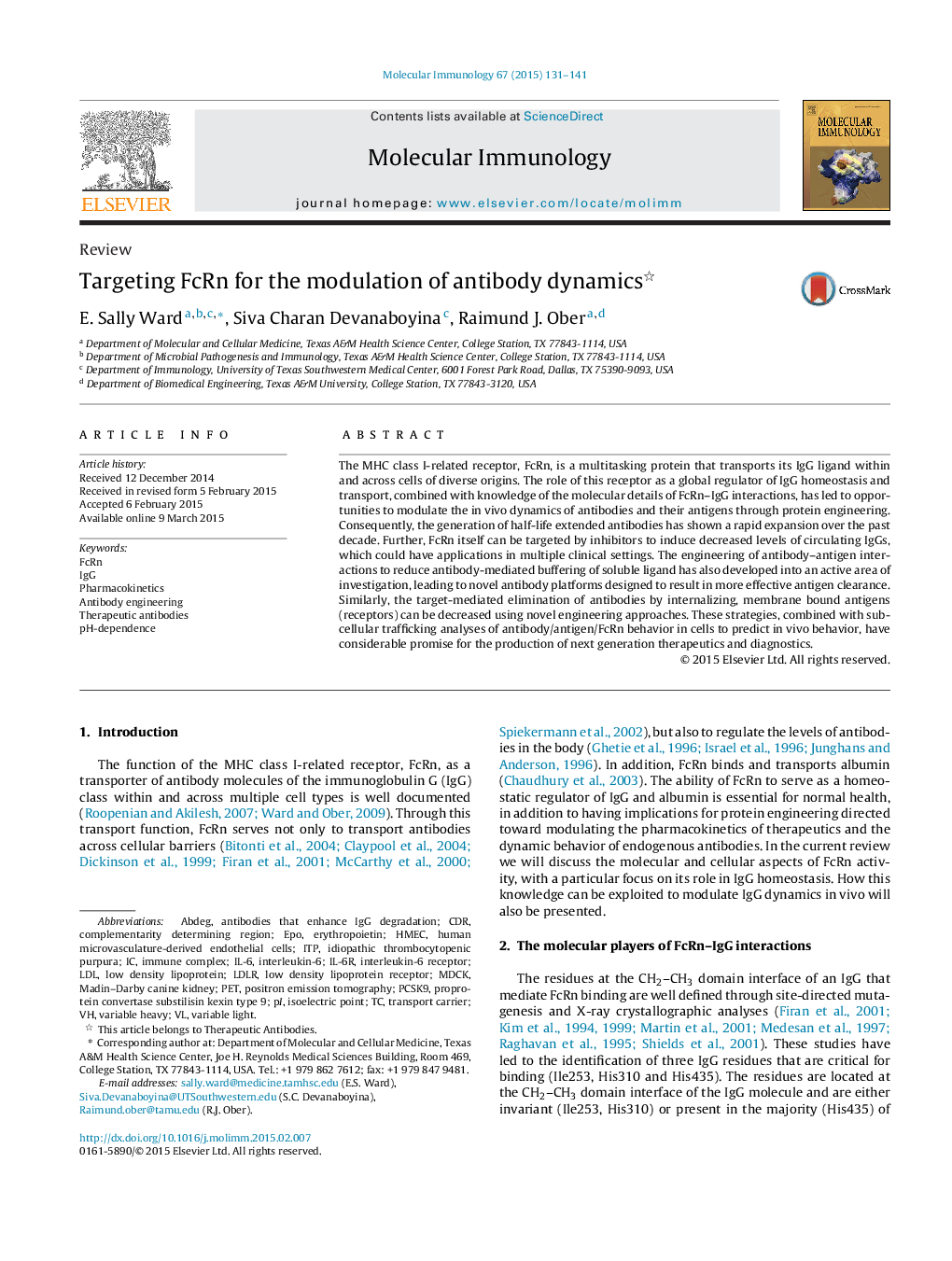| Article ID | Journal | Published Year | Pages | File Type |
|---|---|---|---|---|
| 5916566 | Molecular Immunology | 2015 | 11 Pages |
â¢Multiple factors can impact the in vivo pharmacokinetics of an IgG.â¢Targeting FcRn with inhibitors reduces the levels of circulating IgG.â¢The engineering of antibody-antigen interactions can enhance the clearance of antigen.â¢Subcellular trafficking analyses can inform the in vivo behavior of engineered IgGs.
The MHC class I-related receptor, FcRn, is a multitasking protein that transports its IgG ligand within and across cells of diverse origins. The role of this receptor as a global regulator of IgG homeostasis and transport, combined with knowledge of the molecular details of FcRn-IgG interactions, has led to opportunities to modulate the in vivo dynamics of antibodies and their antigens through protein engineering. Consequently, the generation of half-life extended antibodies has shown a rapid expansion over the past decade. Further, FcRn itself can be targeted by inhibitors to induce decreased levels of circulating IgGs, which could have applications in multiple clinical settings. The engineering of antibody-antigen interactions to reduce antibody-mediated buffering of soluble ligand has also developed into an active area of investigation, leading to novel antibody platforms designed to result in more effective antigen clearance. Similarly, the target-mediated elimination of antibodies by internalizing, membrane bound antigens (receptors) can be decreased using novel engineering approaches. These strategies, combined with subcellular trafficking analyses of antibody/antigen/FcRn behavior in cells to predict in vivo behavior, have considerable promise for the production of next generation therapeutics and diagnostics.
